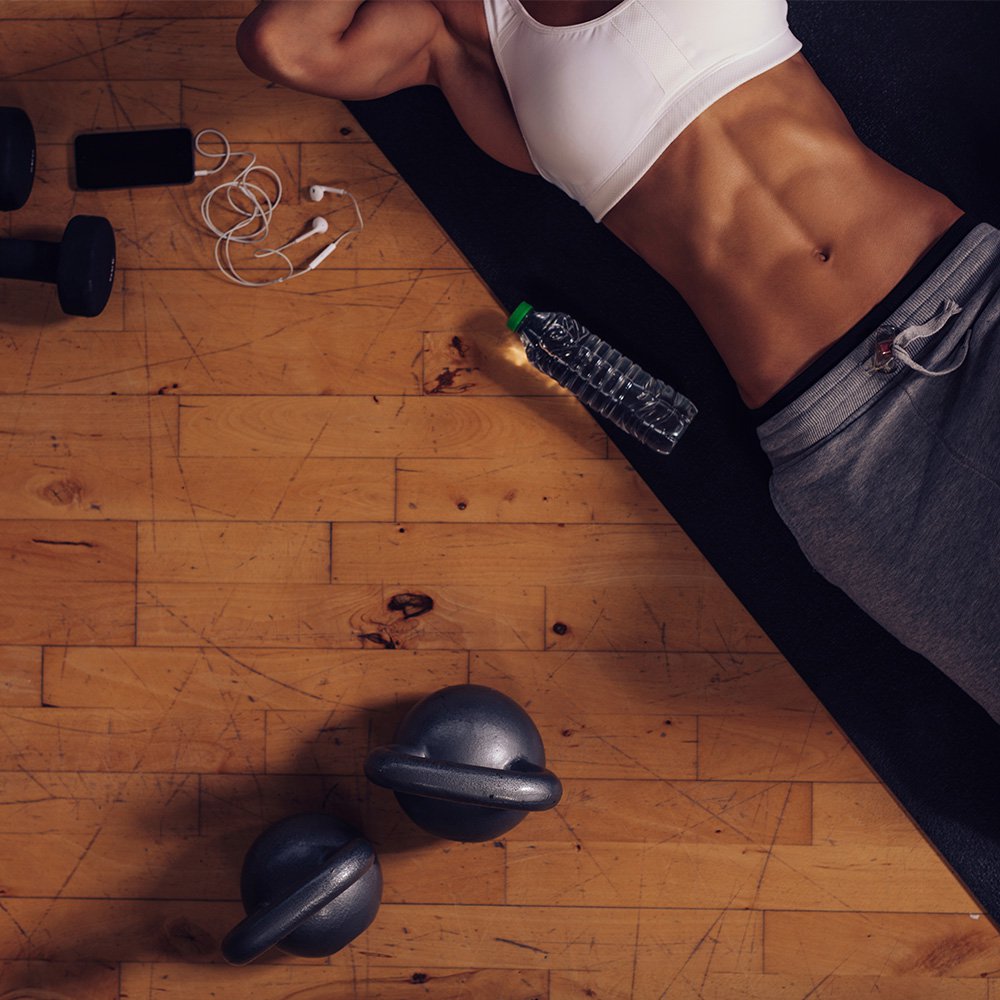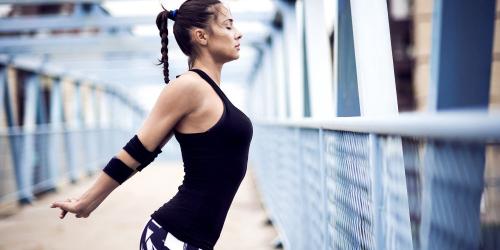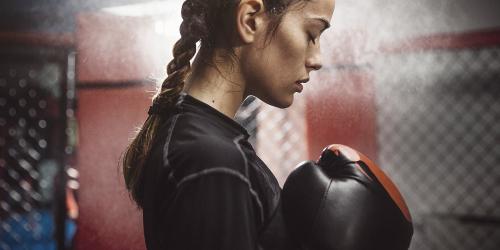A flat stomach and well drawn abdominals, the grail for many of us. However, often, crunches series of crunches, it runs out for two days, before giving up and trade training for 10 minutes more sleep in the morning.
The key to beautiful sculpted abs is yet the regular repetition of specific exercises but also and especially in the alternation of various movements that can not get tired too quickly! By repeating the few exercises presented below regularly and gradually increasing their number, you should start to lose some abdominal fat and see the famous chocolate bars!
Before embarking, however, little lesson anatomy (very) useful: the abdominals consist of 4 muscle groups: the right, the large obliques, small obliques and the transverse. It is the latter who is primarily responsible for your flat stomach. So we try to focus on this one. To erase handles of love , on the other hand, one will focus the effort on obliques.
The bike abs
Contrary to what you might think when you see his name, the exercise is not simply to reproduce a pedal movement with the legs. It takes time to get good results in the abdominals. Lie on your back, being careful not to dig it. Place your hands behind the ears as for crunches. Starting with straight legs, bend one leg to bring it back to your chest and attempt to touch your knee with the opposite elbow. Alter your legs and elbows, to make the obliques work.
Leg crunches lifted
The classic crunch exercise is done by stretching one's legs vertically, instead of laying one's feet on one's knees bent. Hands behind the ears, neck relaxed, we take off the shoulders to the ceiling, to the strength of the abdominals, while making a slight movement of scissors with the legs. Pass them in front of each other gently, while blowing when you climb the bust. Be careful to keep your back straight, good on the ground.
The side crunch
To refine its size, we come to work obliques with this exercise derived from the crunch. Stand on the floor, on a carpet, stretch the arm that is below your bust, palm to the ground. Slightly bend the bottom leg and extend the upper leg to about 45 degrees. Place your free hand behind your neck and start the movement: bring your elbow (and thus take off your shoulder) towards your knee, bending your leg as well. Do the same number of repetitions on each side, to avoid creating muscle imbalance.
The dynamic board
This cladding exercise is probably the most effective, but it is also one of the most formidable! By giving you the objective to vary the pleasures a little with this board that can be boring, you will remain motivated.
Sports coach Lucile Woodward advises switching to the dynamic board as soon as you are able to hold a minute on a regular board. As a reminder, a well executed board is practiced on the knees and the tip of the feet, with a perfect alignment of the shoulders, the back, the buttocks and your legs. Be careful not to dig your back or make your back round, so you do not hurt yourself. At first, it trembles a lot, it's normal. By repeating the exercise each day, you will become more stable and able to hold on longer. Until you can add a movement inspired by yoga, like here.
>> TO READ ALSO: 5 yoga poses for a flat stomach
The Traveling Plank
Another variant of the static board. In cladding position, move sideways while holding the position. The starting board is more complex, since it is held on the palms of the hands and no longer on the elbows! Think about your back when doing the movement.
Chaining Pumps Mountain Climber
The exercise of the pump is very complete, although complex. In addition to your abs, it strengthens your pecs and arms. We cling to a successful series, starting on the knees if it's easier. For this, place yourself in the plank position, on the hands, with arms outstretched, then try to bend your elbows while staying straight, before pushing to extend the arms and lift your body.
The Mountain Climber is a very dynamic dynamic exercise. Place yourself in the plank position on the palms of your hands, arms extended. You must be on tiptoe. Then, without rotating your pelvis, raise one knee to your chest, then the other. Start slowly, then when you feel more comfortable with the Mountain Climber, you can make the movement more dynamic. The muscles of the abdominals are solicited in depth, but the exercise also works the glutes. By combining these two movements, you get a great exercise for the abs!
The roll-over without hands
Here is a fun exercise, which will nevertheless require a little patience and dexterity. For the starting position, it's very simple: lie on your stomach, tighten your legs and lift them slightly. Stretch your arms in front of you as well, taking them off the ground. This is the first part of the exercise: you have to raise legs and arms, stretched by taking off slightly from the ground. Then, with the strength of the abs, switch to one side, so you find yourself on the back, not using the hands to help you.
Once on the back, you will perform a sit-up: you will fold your legs while straightening, arms still stretched, but in front of you, your bust. Spread again and then back to your stomach again. Exercise can be very difficult, but it is fun, so keep it in mind to finish your workout or to change the pleasures as soon as you feel a little more comfortable.
3 exercises for abs with a Swiss Ball: Crunch, Side Crunch and Leg Tuck
The gym ball is a great ally to redraw his abs. Here are three exercises to apply with your Swiss Ball to find a flat stomach. For starters, use the ball to perform a series of crunches more effectively. Lying on your back, drop your ankles on the ball, legs bent. Place your hands behind your head and roll up without moving your legs. You will see that the effort is more intense!
For the side crunch - do not forget to do both sides! - place your hips on the pelvis, first to one side, as if you were in the sideboard position. Your legs are tense and, instead of standing on your elbow or palm, you are suspended on the Swiss Ball. Once stabilized, straighten your bust to work the waist, ensuring that the ball does not move.
Finally, exercise the Leg Tuck, which consists of placing yourself as to make a board, except that your ankles are placed on the ball. You will then bring your legs and the ball towards you, bending your knees, keeping your arms tight under your shoulders and a sheathed posture. Be sure to stay in the same starting alignment.
In reality, with a ball, you can do all the classic exercises, by swapping one of your ground supports against a support on the ball. This strengthens the movement and enhances the exercise for better results. All while adding a playful aspect to the training!


